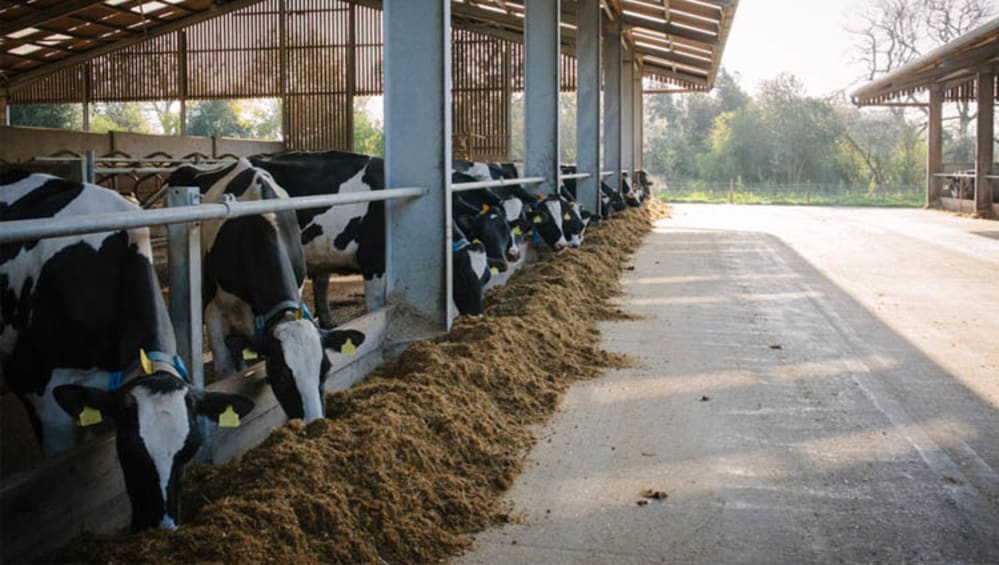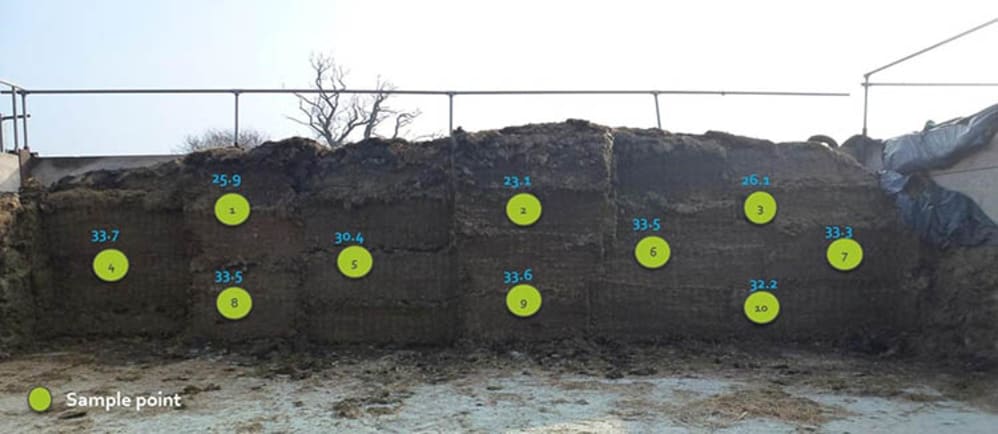Better rumen function critical for milk solids and milk value this winter
Published Monday, 9th September 2019Increasing milk from forage this winter is about better supporting the rumen fermentation, not feeding less bought-in feed, explains Dr Jamie-Leigh Douglas.
Extracting the greatest possible milk value from home-grown forage will be one of the primary factors affecting both feed costs and margins per litre this winter. For many, that includes maximising butterfats, and the key to that is a well-functioning rumen.
“We all know that the rumen sits at the heart of all dairy cow feeding,” explains our Technical Support Manager Dr Jamie-Leigh Douglas. “If we want to get more out of forage, and support milk value by lifting butterfats, optimising the fermentation of fibre within the rumen is critical.”
Winter forage challenges
The specific challenges this winter will depend on the forage available. The first cut grass silage analysis results released so far by Trouw Nutrition suggest that higher average fibre levels (NDF and lignin) compared to last year may be a challenge.
“In many areas the grass grew early and fast this year, so was more mature than usual when cut, despite some regions cutting earlier,” states Dr Douglas. “The result is a lower average fermentable energy (FME) content.
“Silage is in plentiful supply. So as well as the potential challenge of maintaining ration energy levels – encouraging potential overreliance on rapidly fermentable starch feeds – there’s also a risk that milk producers will rely too heavily on forage in an attempt to save costs by cutting back on other feed ingredients.”
Both scenarios pose a risk to the balance of nutrients needed to maintain good rumen function. Rumen function is critical to getting the most out of forage this winter, and avoiding negative effects on feed efficiency, milk output and body condition.
Ensuring the ration is correctly balanced to support the rumen is therefore critical. Issues such as sub-acute ruminal acidosis (SARA), for example, have been shown to result in milk losses of up to 2.7 kg/cow/day, as well as a drop-off in milk quality.
Stabilising rumen pH
According to Dr Douglas, what’s needed is a feeding strategy that specifically targets a balanced energy release in the rumen, and so limits the dramatic rumen pH drop associated with SARA. It also needs to promote the production of milk fat pre-cursors to fully support butterfat production in the udder.
“The aim is to provide as stable a rumen pH as possible, optimising fibre breakdown in the rumen by minimising the time spent below pH 5.8, when microbial activity and fibre digestion are compromised,” she explains. “This maximises production of the volatile fatty acid (VFA) acetate in the rumen, which is an important pre-cursor for milk fat production.”
The overall diet must balance both the amount and rate of energy and protein release in the rumen, correctly matching the nutrient supply of bought-in concentrates to the nutrients contained within home-grown feeds. With grass silage FME levels potentially lower, additional energy feeds may well be needed.
“The inclusion of extra FME in the form of sugars and starch is essential to help balance the rapidly available rumen degradable protein (RDP) in grass silage. But to avoid negatively impacting rumen pH and fermentation efficiency, the diet should also include a good supply of energy from digestible fibre, by using feeds such as sugar beet feed and soya hulls.
“Even those relying on compound feed in the parlour to supplement grass silage can switch to a concentrate based more heavily on digestible fibre, rather than starch,” Dr Douglas continues.
“However, in all cases the concentrate must be of high quality, with good palatability to encourage full intake of the nutrients needed to balance forage in the rumen.”
According to Dr Douglas, the addition of a slow-release rumen conditioner like Acid Buf or the live yeast Vistacell may also be worthwhile. This can help reduce the rate and extent of any rumen pH drop, and so minimise the negative impact on fibre digestion and milk fat production.
In fact, research into optimising rumen function has shown that including a rumen conditioner in addition to a yeast can produce gains exceeding those of using the yeast alone. The result was a substantial improvement in rumen pH, volatile fatty acid (VFA) production and butterfat yield, leading to a 3% advantage in fat-corrected milk (FCM) production (per kg of dry matter intake).
Consistent nutrient supply
Another critical factor when looking to optimise fermentation efficacy is a steady – as well as balanced – supply of nutrients to the rumen. This nutrient supply can change on a daily basis by the variation in silage quality that can occur throughout each silage clamp, resulting in significant disruption to rumen function.
For example, on-farm data generated using the NIR4 Farm portable spectrometer has shown that silage dry matter can vary by up to 10% across even a single clamp face (figure 1).
Figure 1 – Grass silage dry matter % variation (figures in blue) across the clamp face (Source: NIR4 Farm, 2014)
“Even a 2.5% reduction in silage DM can cut DM intake by up to 1kg, whilst also lowering overall fermentation efficiency by upsetting the rumen microbes,” Dr Douglas highlights. “Silages therefore need to be analysed and rations re-formulated much more regularly than currently happens on many farms, and ideally at least monthly.
“Fortunately, it’s now possible to use a hand-held NIR unit to analyse silages in real time on the farm, allowing rations to be adjusted straight away to compensate for any change in feed value. The result is a much more consistent nutrient supply to the rumen, better fermentation of all feeds and, ultimately, better margin over feed costs.”
Latest news
Stay ahead with the latest news, ideas and events.

Online Feed Fibre Calculator
Calculate the percentage of dietary fibre in your feed
Our calculator is designed for nutritionists and uses averages of global raw materials to calculate the dietary fibre content (plus other more in-depth fibre parameters) of finished animal feed. These parameters are available within AB Vista’s Dietary Fibre analysis service (part of our NIR service).
Sign up for AB Vista news
A regular summary of our key stories sent straight to your inbox.
SUBSCRIBE© AB Vista. All rights reserved 2025
Website T&Cs Privacy & Cookie Policy Terms & Conditions of Sale University IDC policy Speak Up Policy


























